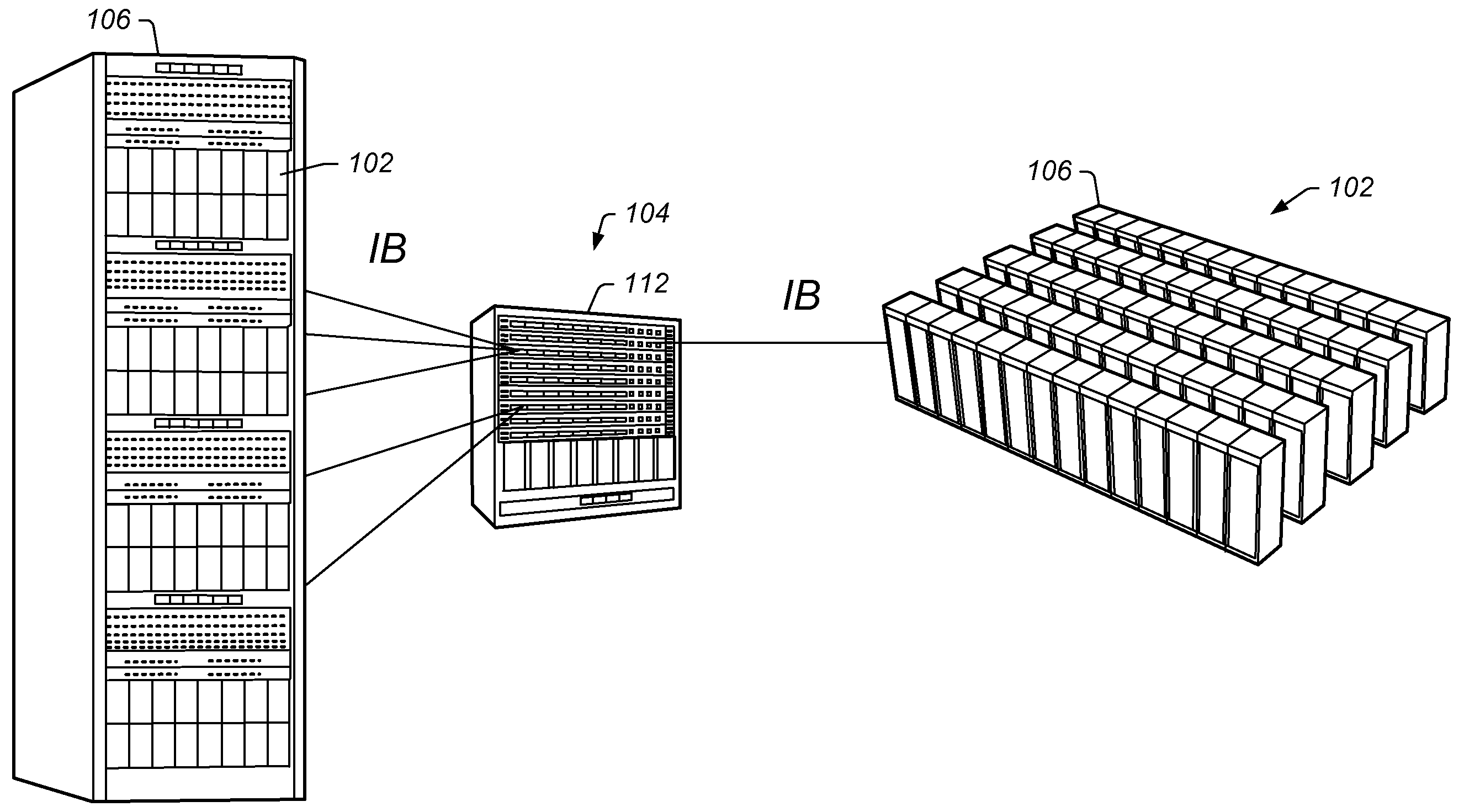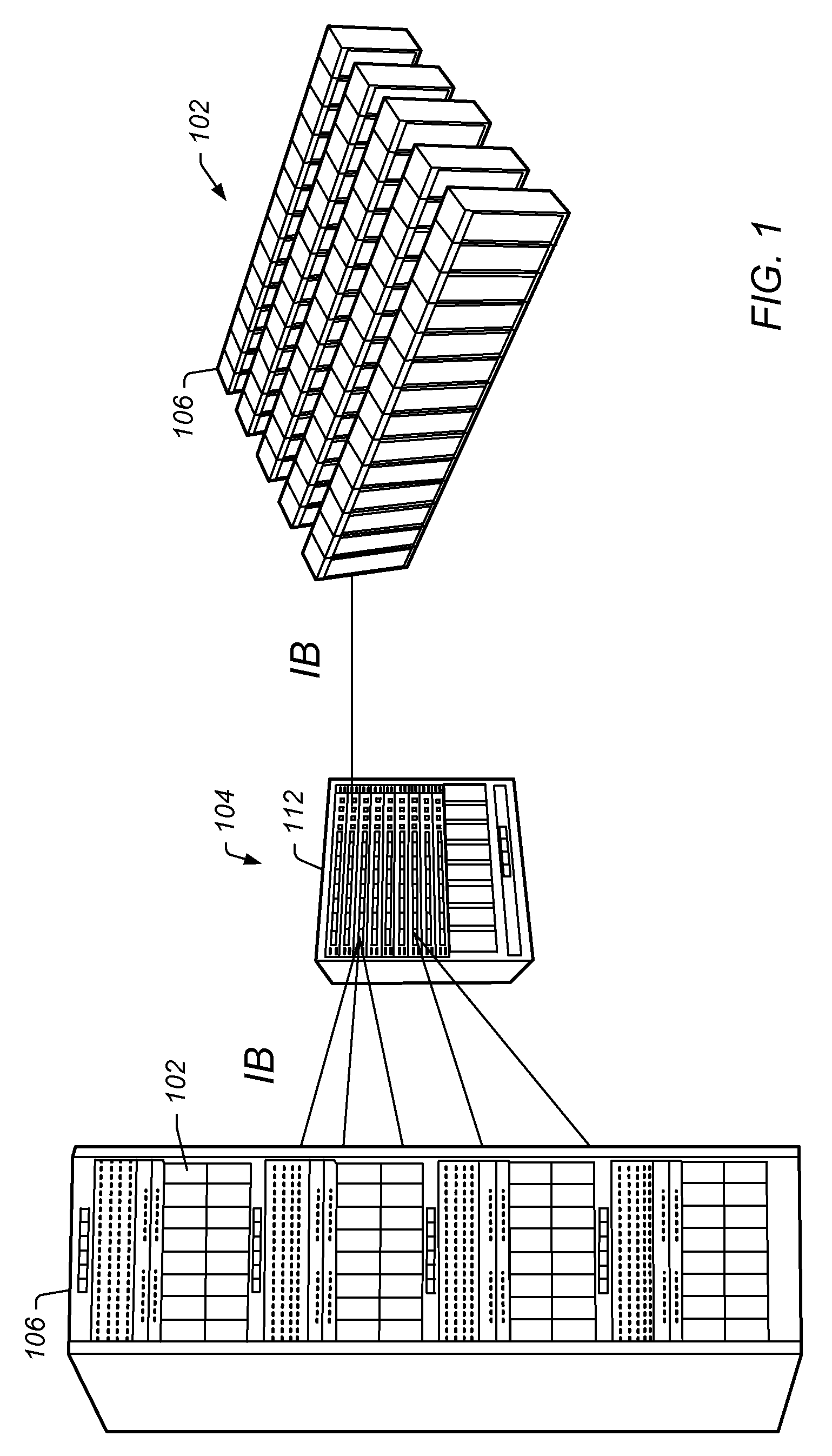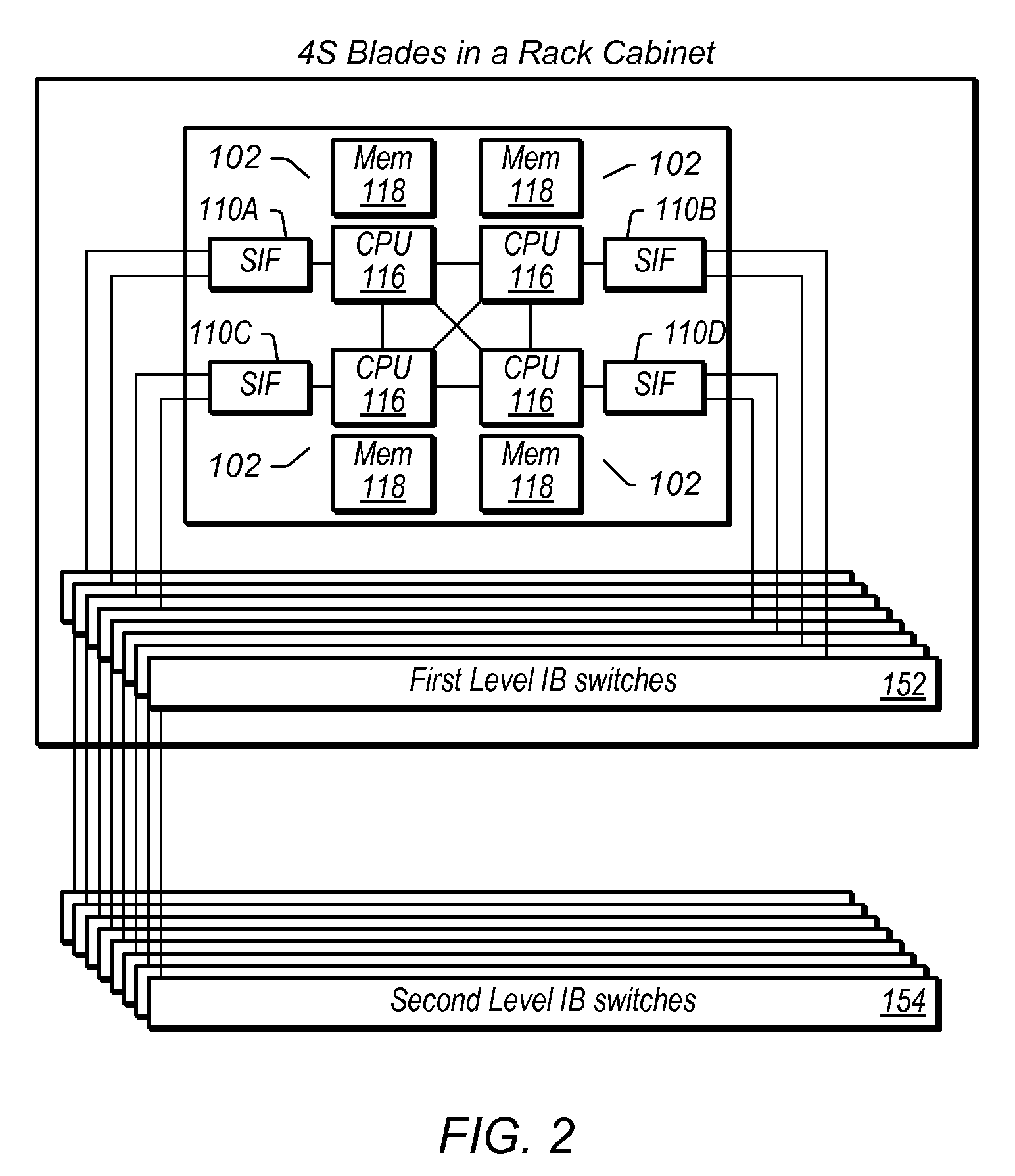Multiple Processes Sharing a Single Infiniband Connection
a technology of infiniband connection and multiple processes, applied in the field of clusters, can solve the problems of large number of send and receive queue structures required per node, large amount of add-ons, and storage space required for qps is not available for application use, so as to improve network performance, reduce system cost, and improve compute performance
- Summary
- Abstract
- Description
- Claims
- Application Information
AI Technical Summary
Benefits of technology
Problems solved by technology
Method used
Image
Examples
Embodiment Construction
Definitions
[0040]Compute Node—refers to a computer system having a processor (or CPU) and memory. A Compute Node may have a single processor (which may be single core or multi-core) or may have a plurality of processors. One example of a Compute Node is a blade server.
[0041]Local Node—refers to the Compute Node corresponding to a local reference. For example, the Compute Node associated with a particular CPU would be the CPU's local node.
[0042]Network Fabric—refers to a network or interconnect for connecting multiple Compute Nodes.
[0043]Compute Node Interface Device (or “Network Adaptor”)—refers to an interface for coupling a Compute Node to a Network (or Network Fabric).
[0044]Remote Location—refers to a location on another machine on a network.
[0045]FIG. 1 illustrates an exemplary cluster system according to one embodiment of the invention. As shown, the system may comprise a plurality of computer systems or compute nodes 102 that are connected together by an interconnect 104. The ...
PUM
 Login to View More
Login to View More Abstract
Description
Claims
Application Information
 Login to View More
Login to View More - R&D
- Intellectual Property
- Life Sciences
- Materials
- Tech Scout
- Unparalleled Data Quality
- Higher Quality Content
- 60% Fewer Hallucinations
Browse by: Latest US Patents, China's latest patents, Technical Efficacy Thesaurus, Application Domain, Technology Topic, Popular Technical Reports.
© 2025 PatSnap. All rights reserved.Legal|Privacy policy|Modern Slavery Act Transparency Statement|Sitemap|About US| Contact US: help@patsnap.com



